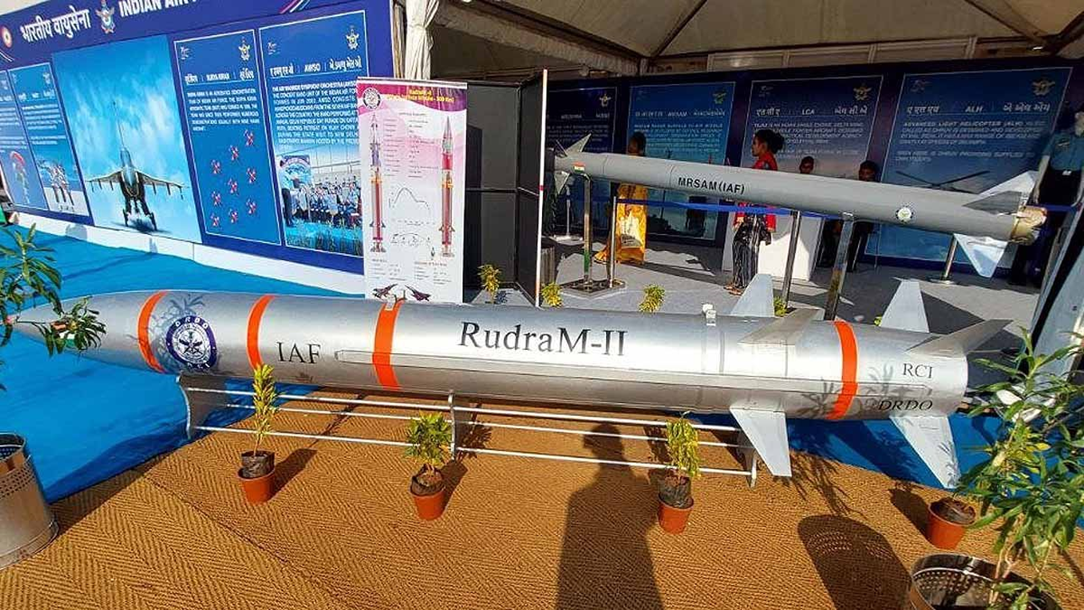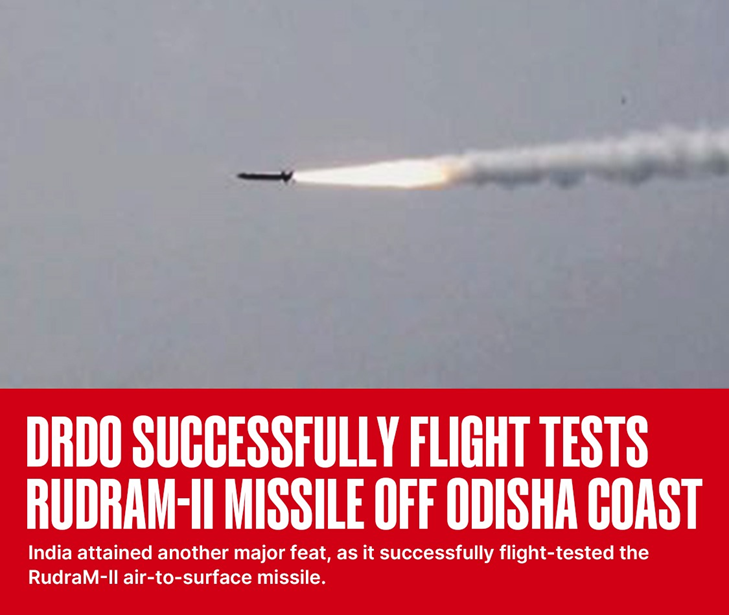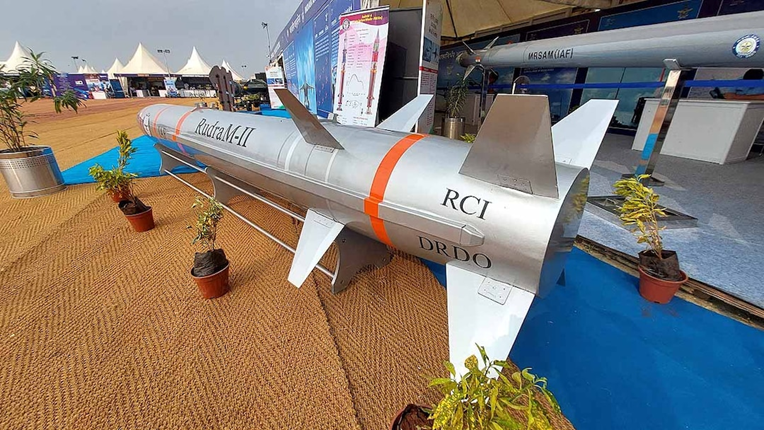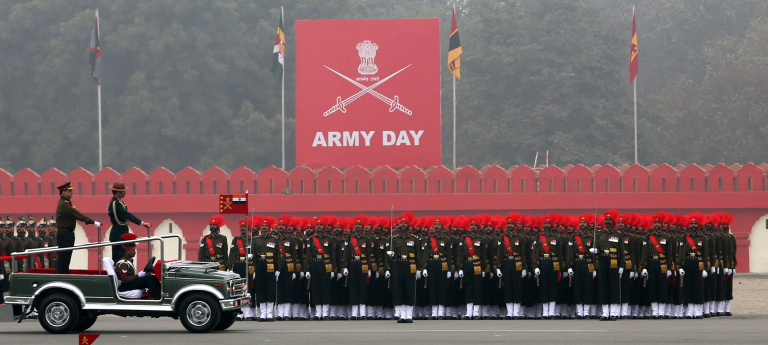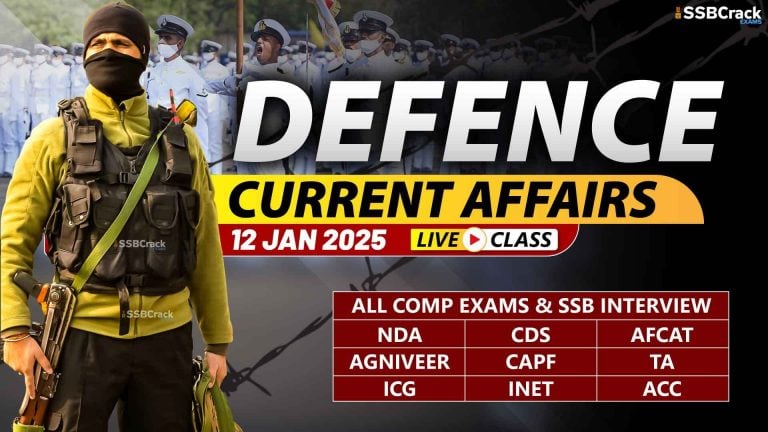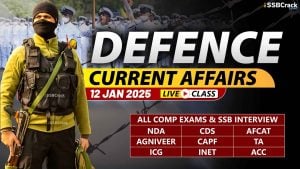Defence Research & Development Organisation (DRDO) successfully flight-tested the Rudram-II air-to-surface missile from the Su-30 MK-I platform of the Indian Air Force (IAF) off the coast of Odisha at around 1130 hours on May 29, 2024.
India Successfully Test Fires RudraM II Missile
DRDO successfully flight-tested the Rudram -II air-to-surface missile from Su-30 MK-I platform of the IAF off the coast of Odisha at around 1130 hours on May 29, 2024. The flight-test met all the trial objectives, validating the propulsion system and control & guidance algorithm. The performance of the missile has been validated from the flight data captured by range tracking instruments like electro-optical systems, radar and telemetry stations deployed by Integrated Test Range, Chandipur at various locations, including the on-board ship.
The Rudram-II is an indigenously developed air-to-surface anti-radiation missile. With a range of 300 km, a speed of up to Mach 5.5 and a 200 km payload, the missile is expected to play a vital role in strengthening India’s air security and defence preparedness and act as a ‘force multiplier’
Rudram-II is an indigenously developed solid-propelled air-launched missile system. Rudram means ‘remover of sorrows.’
It is an air-to-surface missile that is meant to neutralise various types of enemy assets. The Rudram missiles are India’s first indigenous anti-radiation missiles.
It can pick up enemy radio frequencies and signals from radars from over 100 km. It can also operate in Lock-On-Before/After-Launch systems. The Rudram-II’s internal guidance system lets it guide itself to the target after it has been fired. India currently uses the Russia’s Kh-31 missile in its Sukhoi fighter jets.
The Rudram-II missile will replace the Kh-31s. This is the latest version of the missile. The flight testing of the missile came amid India’s bitter border row with China in eastern Ladakh.
The Rudram-I version has two seekers – a passive-homing head seeker and a one Millimeter Wave (MMW) seeker. The former helps find targets over a range of radio frequencies, while the latter allows the missile to function in a variety of weather conditions. The Rudram-I has a 100-to-150-kilometre range. It can hit speeds of up to Mach 2 – twice the speed of sound. It has a launch altitude range of 1 to 15 kilometres.
